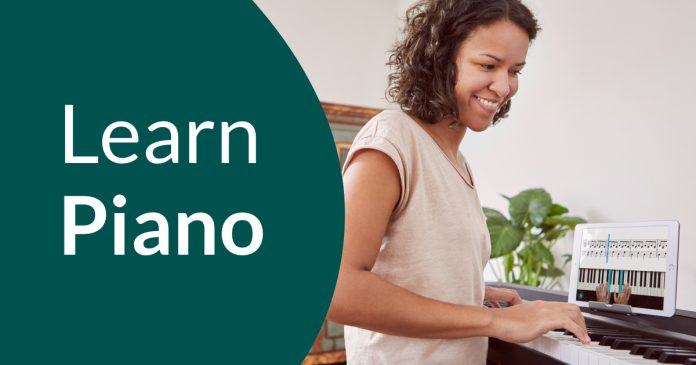Piano learning has long been associated with traditional methods involving classical music, structured lessons, and a rigid curriculum. However, as the world of music education evolves, alternative piano lessons have emerged, offering unique and innovative techniques that cater to diverse learning styles. These methods can make learning the piano more engaging, enjoyable, and accessible. In this article, we will explore various alternative piano lesson techniques that aspiring pianists can embrace to enhance their musical journey.
Online Piano Lessons
Online piano lessons have become increasingly popular due to their flexibility and accessibility. With a plethora of resources available on the internet, students can learn to play the piano from the comfort of their own homes.
Key Features of Online Piano Lessons:
- Interactive Platforms: Websites like Piano Marvel, Flowkey, and Simply Piano offer interactive lessons that provide real-time feedback and progress tracking.
- Video Tutorials: Platforms like YouTube host numerous piano tutorial channels where experienced pianists share their expertise and techniques.
- Virtual Classrooms: Many online music schools offer virtual piano classes, allowing students to interact with instructors and peers in a digital environment.
App-Based Learning
Piano learning apps provide a gamified approach to education, making practice sessions fun and engaging. These apps are designed to cater to various skill levels, from beginners to advanced players.
Key Features of App-Based Learning:
- Step-by-Step Lessons: Apps like Yousician and Simply Piano offer structured, step-by-step lessons that guide students through the learning process.
- Real-Time Feedback: Many apps use the device’s microphone to listen to the student’s playing and provide instant feedback on accuracy and timing.
- Gamification: Incorporating game-like elements such as points, levels, and achievements, these apps make learning more enjoyable and motivating.
Group Piano Lessons
Group piano lessons create a social and collaborative learning environment, which can be beneficial for many students. These lessons can be conducted in person or online and often involve playing in ensembles or small groups.
Key Features of Group Piano Lessons:
- Peer Interaction: Learning in a group setting allows students to interact with peers, share ideas, and support each other’s progress.
- Collaborative Learning: Group lessons often involve ensemble playing, helping students develop their listening and teamwork skills.
- Motivational Environment: The presence of peers can motivate students to practice regularly and stay committed to their learning journey.
Self-Directed Learning
Self-directed learning involves students taking control of their education, using various resources to guide their practice and progress. This method is ideal for individuals who prefer a more autonomous approach to learning.
Key Features of Self-Directed Learning:
- Personalized Curriculum: Students can choose their learning materials based on their interests and goals, whether it’s classical pieces, pop songs, or jazz improvisation.
- Flexible Pacing: Self-directed learners can progress at their own pace, allowing them to spend more time on challenging areas and move quickly through familiar concepts.
- Diverse Resources: Books, online tutorials, sheet music, and practice tools are all available for self-directed learners to utilize.
Incorporating Modern Technology
Modern technology has revolutionized piano education, providing tools that enhance the learning experience. From digital pianos to music software, technology offers various ways to make piano practice more effective and enjoyable.
Key Features of Modern Technology in Piano Learning:
- Digital Pianos and Keyboards: These instruments often come with built-in learning features, such as guided lessons, metronomes, and recording capabilities.
- Music Software: Programs like GarageBand and Synthesia allow students to compose, record, and practice with visual aids that show finger placements and note progressions.
- Interactive Sheet Music: Digital sheet music platforms like SmartMusic provide interactive features, including playback, tempo adjustment, and annotation tools.
Exploring Different Music Genres
Alternative piano lessons often encourage students to explore a variety of music genres, moving beyond the traditional classical repertoire. This approach keeps learning interesting and broadens the student’s musical horizons.
Key Features of Exploring Different Music Genres:
- Diverse Repertoire: Students can learn pieces from various genres, including jazz, blues, pop, rock, and electronic music.
- Improvisation Skills: Genres like jazz and blues emphasize improvisation, helping students develop their creativity and spontaneity.
- Cultural Appreciation: Exploring different genres allows students to appreciate the cultural and historical contexts of various musical styles.
Blended Learning Approaches
Blended learning combines traditional and alternative methods, offering a balanced approach to piano education. This method can involve in-person lessons supplemented with online resources, practice apps, and self-directed study.
Key Features of Blended Learning:
- Comprehensive Education: Combining different methods provides a well-rounded education, addressing various aspects of piano playing, from technique to theory.
- Flexible Learning: Students can benefit from the structure of traditional lessons while enjoying the flexibility and innovation of alternative approaches.
- Enhanced Engagement: Using a variety of learning tools keeps students engaged and motivated, reducing the risk of burnout.
Conclusion
Discovering alternative piano lessons opens up a world of possibilities for aspiring pianists. Whether through online platforms, app-based learning, group lessons, self-directed study, modern technology, diverse genres, or blended approaches, these innovative techniques cater to different learning styles and preferences. By embracing these alternative methods, students can enjoy a more engaging, flexible, and personalized piano learning experience. So, if you’re looking to start or continue your piano education, consider these unique techniques and discover the joy of learning music in new and exciting ways.
